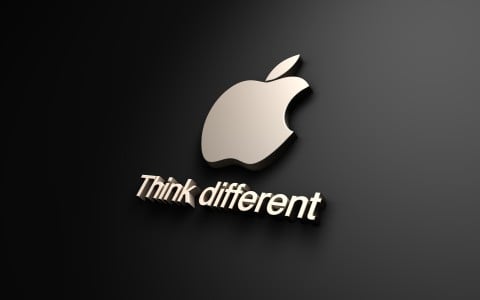Produsele Apple sunt unele dintre cele mai scumpe de pe glob si oamenii platesc sute sau chiar mii de dolari pentru a cumpara un iPhone, o tableta iPad, sau un Mac. Rareori se intampla ca produsele Apple sa fie disponibile la preturi foarte mici, compania avand o strategie interesanta pentru a mentine preturile ridicate si a descuraza oferirea de promotii substantiale. Catre magazine, Apple vinde produsele la mari, diferenta fata de cele de vanzare fiind mica, insa Apple reuseste sa isi mentina retailerii ca si clienti prin oferirea de comisioane la fiecare vanzare, asta separat de pretul de vanzare, care este oricum mai mic decat cel din magazine.
Apple, however, extends only a tiny wholesale discount on its Macs and iPads to your retailer of choice. The actual numbers are a closely guarded secret, protected by confidentiality agreements between Cupertino and its resellers, but the difference probably amounts to only a few percentage points off the official price that you find at Apple’s own stores. With such a narrow gap to tinker with, most retailers can’t offer big discounts and still hope to turn a profit.
This is where the second part of Apple’s retail strategy kicks in: The company supplements its tiny wholesale discounts to resellers with more substantial monetary incentives that are available only if those resellers advertise its products at or above a certain price, called the “minimum advertised price” (MAP). This arrangement enables retailers to make more money per sale, but it prevents them from offering customers significant discounts, resulting in the nearly homogeneous Apple pricing we are used to.
Apple ofera bani marilor retaileri daca acestia comercializeaza produsele la un pret minim de vanzare, acesta fiind de obicei egal sau putin mai mare decat cel din Apple Store-uri. Impreuna cu obligativitatea de a promova produsele, contractele incheiate intre retaileri si Apple sunt extrem de profitabile pentru ambele parti, Apple incasand foarte multi bani din vanzari, retailerii incasand ceva mai putin, insa avand beneficiul de a atrage clienti in magazine, acestia achizitionand produse accesorii pentru cele ale Apple.
The situation with the iPhone is slightly different. Though the phone’s retail price is in the hundreds of dollars, most consumers buy it alongside a two- or (in Canada) three-year cellular service plan. In exchange for the opportunity to charge their iPhone customers $70 or more a month, the carriers subsidize the cost of the device itself, which consequently carries a much lower price than it would if sold unlocked and contract-free.
For retailers, these phone-and-service-contract deals are profitable not because of the hardware’s selling price, but because of a commission that carriers pay them, depending on the length and the cost of the mobile plan that each customer chooses. This helps explain why many stores will sell you an iPhone at the discounted price only if you buy it together with “in-store activation”; otherwise, they’d miss out on the bulk of their financial gain from the transaction.
Explicatia anterioara este disponibila pentru Mac-uri, deoarece in cazul iPhone-urilor preturile de vanzare sunt calculate altfel. Operatorii vand in general cele mai multe iPhone-uri si desi ei le cumpara de la Apple la pret intreg, vanzand terminalele impreuna cu abonamente pe 1/2 ani, reusesc sa obtina profit din fiecare client. Retailerii obtin comisioane daca vand terminalele impreuna cu abonamente, iar in final toata lumea este fericita, inclusiv clientul care in final plateste un pret premium pe produse multumita acestei strategii.
Nimeni nu stie detaliile exacte ale contractelor dintre Apple si magazine, insa in mare aceasta este strategia in baza careia Apple reuseste sa vanda produse la preturi mari.






















